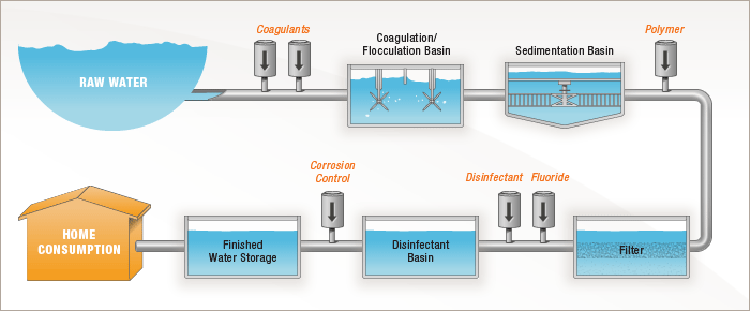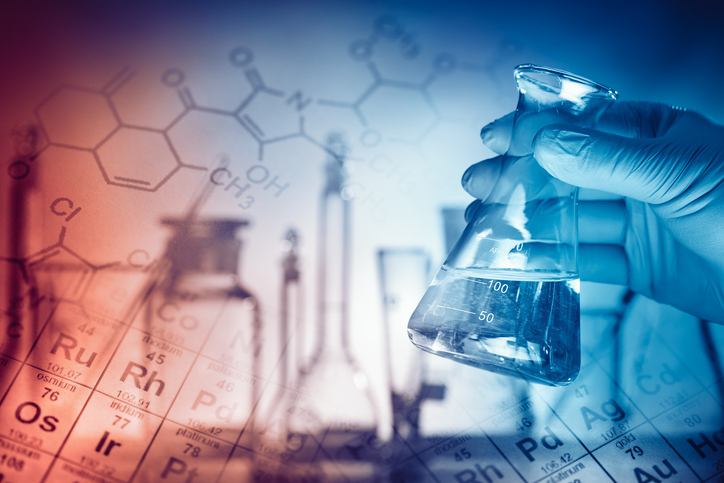New-generation water treatment polymer products support eco-friendly filtration methods.
New-generation water treatment polymer products support eco-friendly filtration methods.
Blog Article
Discover Just How Water Therapy Polymer Works to Improve Your Water Filtration Refine
Water therapy polymers have actually arised as essential agents in the world of water purification, working as both flocculants and coagulants to significantly improve the removal of contaminants - water treatment polymer. By assisting in bit aggregation and boosting sedimentation efficiency, these substances not just improve water top quality but also improve functional procedures.
What Are Water Treatment Polymers?
Water therapy polymers are specialized chemical substances employed in different processes to enhance the effectiveness of water filtration and therapy systems. These polymers play an important function in the elimination of impurities, including suspended solids, natural matter, and pathogens from water resources. They are typically categorized right into natural, synthetic, and semi-synthetic polymers, each with distinct attributes and applications.
Water therapy polymers operate as flocculants, coagulants, or dispersants, facilitating the heap of particulates for much easier elimination. Their performance can significantly decrease the expense and energy connected with typical therapy methods, making them essential elements in metropolitan and industrial water treatment centers. As water quality policies end up being a lot more strict, the need for effective water treatment polymers remains to grow, emphasizing their value in modern water administration practices.
Device of Action
The system of action of water therapy polymers entails a number of essential procedures that boost the elimination of pollutants from water. Mainly, these polymers serve as flocculants, promoting the gathering of put on hold particles into larger clusters called flocs - water treatment polymer. This aggregation happens via cost neutralization, where the cationic polymers engage with negatively charged particles, reducing their electrostatic repulsion and allowing them to coalesce
When flocs are developed, their enhanced size and weight help with sedimentation or filtration, hence properly eliminating them from the water column. Furthermore, some polymers might show adsorptive residential or commercial properties, binding to specific impurities and boosting their elimination effectiveness. This twin activity not only enhances the physical separation of bits however also help in the decrease of liquified raw material and hefty metals.
Kinds Of Water Treatment Polymers
Numerous types of water therapy polymers are utilized in various applications to enhance the effectiveness of impurity removal processes. These polymers can be extensively classified right into three major kinds: flocculants, coagulants, and dispersants.

Coagulants, on the other hand, are commonly low-molecular-weight compounds that neutralize the fee of colloidal bits. They advertise the he has a good point development of larger accumulations, which can after that be eliminated extra quickly. Typical coagulants consist of aluminum sulfate and ferric chloride, frequently made use of combined with flocculants to enhance total effectiveness.
Dispersants offer a various purpose; they maintain particles in suspension, avoiding them from agglomerating. This is specifically important in applications such as oil-water separation, where it is vital to keep impurities spread until they can be properly removed.
The choice of the proper polymer kind relies on the particular features of the water being dealt with and the wanted quality of the final effluent.
Advantages of Utilizing Polymers
Polymers play a vital duty in boosting the effectiveness of water treatment procedures, offering a variety of benefits that contribute to enhanced functional performance. Among the primary advantages of making use of polymers is their capability to dramatically raise the performance of fragment elimination throughout coagulation and flocculation. By promoting quicker and more effective gathering of particles, polymers facilitate try these out the clarification of water, causing higher top quality output.
Additionally, polymers can boost the sedimentation process, causing minimized sludge quantities. This not just lowers disposal prices however additionally decreases the ecological impact related to waste management. The use of water therapy polymers can lead to improved purification prices, permitting for more reliable use of resources and reduced functional downtime.
Furthermore, polymers help in supporting the water chemistry, which can reduce problems associated with scaling and corrosion in therapy systems. This stablizing adds to the longevity and integrity of devices, eventually lowering maintenance prices. Last but not least, the convenience of polymers allows their application throughout different water treatment situations, making them very useful tools for accomplishing governing conformity and making certain public health safety and security.
Applications in Water Filtration

Water purification processes utilize a selection of polymers to boost therapy effectiveness and make certain the elimination of impurities. These polymers play vital duties in coagulation, flocculation, and sedimentation, successfully accumulating suspended particles and promoting their removal from water. Coagulants, such as polyaluminum chloride, communicate with pollutants, counteracting their fees and advertising the formation of bigger aggregates, understood as flocs.
In addition to standard coagulants, specialized polymers are employed in membrane filtration systems. These polymers improve membrane efficiency by decreasing fouling and extending operational life expectancy. Polymeric adsorbents are made use of to target details pollutants, consisting of heavy steels and organic substances, providing a customized technique to water therapy.
Polymers likewise find applications in sludge dewatering procedures, improving the performance of solid-liquid splitting up - water treatment polymer. By enhancing the dewatering features of sludge, these polymers minimize disposal expenses and environmental impact
Verdict
In conclusion, water therapy polymers play a critical duty in improving water purification processes by acting as efficient flocculants and coagulants. Generally, the unification of these specialized compounds is vital for maximizing water therapy systems and making certain effective purification outcomes.
Report this page